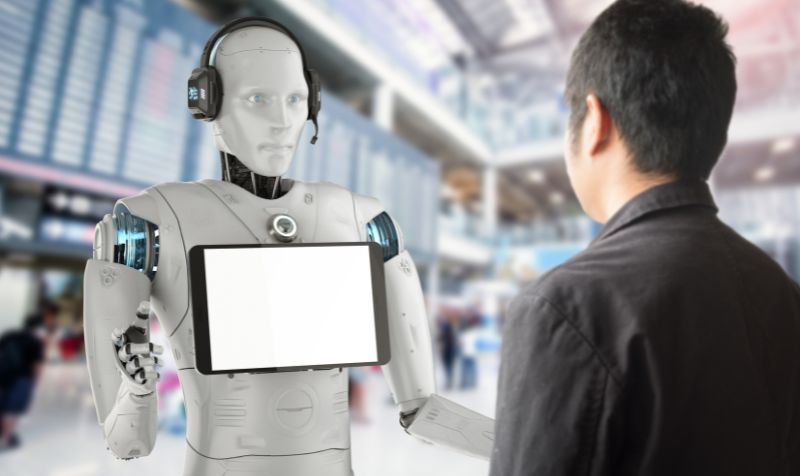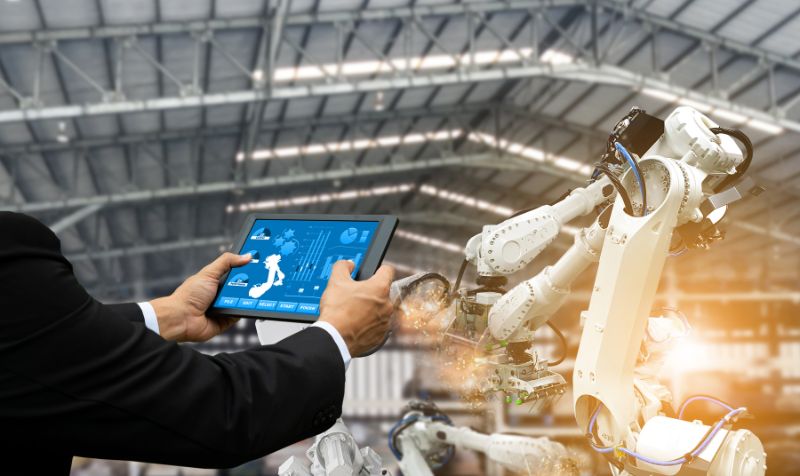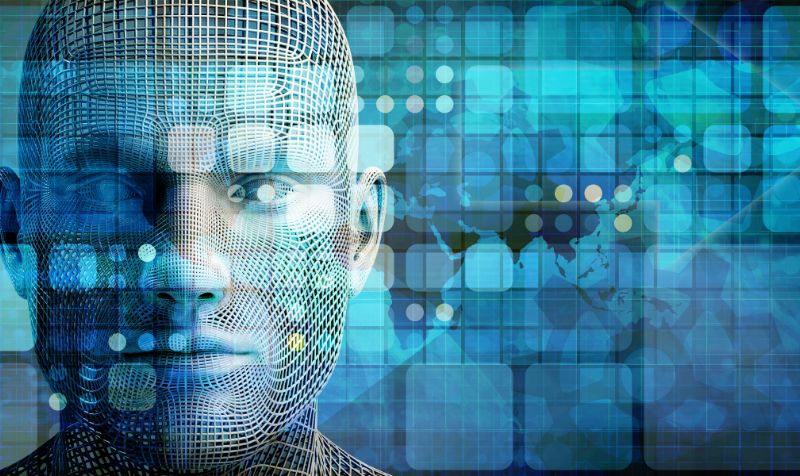Introduction To Machine Learning
Machine Learning is an integral part of today’s computer programming. The market share of global machine-learning platforms is projected to grow to an astonishing $31,36 billion by 2028. From your social media algorithm to cab assignment via Uber, Machine Learning allows businesses to understand customer behaviour and operational patterns. Some everyday use cases of Machine Learning are Recommendation Systems, Image and Object Recognition, Fraud Detection, Healthcare Diagnostics, Social Media Analysis, and more.
Machine Learning Adoption in Numbers
- More than 86% of global businesses now attest to newer investments and the adaption of AI initiatives.
- The West accounts for 43% of the global AI market and job creation in 2023.
- As per Indeed, Data Scientist is the highest in-demand job profile.
- The Machine Learning engineering jobs are projected to grow by 22% by 2030.

What is Machine Learning?
Machine Learning (ML) is a field of artificial intelligence (AI) that enables software to make decisions and predict outcomes without requiring explicit coding or programming.
In the world of computer languages, every output by a computer used to be preceded by an input from the user. However, with Machine Learning, computer programs can learn from data and make predictions without being specifically told how to do so.
What Is Machine Learning Engineering?
Machine learning engineering is the practice of deploying and integrating machine learning models into real-world applications. It bridges the gap between research and implementation to ensure that machine learning solutions are robust, scalable, and serve their intended purposes effectively.
What Is Artificial Intelligence And Machine Learning?
AI is the broad field of computer science that focuses on creating machines and software that can perform tasks that require human intelligence. It has branches like Machine Learning, Data Learning, Robotics, Natural Language Processing (NLP) and Computer Vision.
What Is The Difference Between Artificial Intelligence And Machine Learning?
AI encompasses the broader goal of creating intelligent systems, while ML is a specific technique within AI that allows machines to learn and improve their performance through data-driven approaches.
What Is The Use Of Machine Learning?
ML focuses on enabling computers to access data and learn patterns to make predictions. ML occurs in everyday use through email filtering, social media algorithms, voice recognition, healthcare diagnostics, and plenty of other day-to-day technology perks.
What Is A Machine Learning Model?
A machine learning model is an algorithm trained to pick up patterns from data to make predictions or decisions based on that knowledge.
What Are Machine Learning Algorithms?
Machine Learning is enabled through a set of mathematical and statistical procedures. These models are known as Machine Learning Algorithms. A Machine Learning model learns patterns and makes predictions from data. ML algorithms are vital in extracting meaningful information and knowledge from the data.
Here’s a step-by-step breakdown of how the algorithm works:
- Step 1: The algorithm takes data that consists of features and their corresponding labels.
- Step 2: The algorithm uses this data to identify underlying patterns and relationships within the dataset.
- Step 3: The derived knowledge in the form of a dataset is used to make predictions or decisions on new, unseen data.
What are the types of Machine Learning?
There are four main types of machine learning: supervised learning, unsupervised learning, semi-supervised learning, and reinforcement learning.
What is Supervised Machine Learning?
In supervised machine learning, algorithms are trained using labelled datasets, where both input and corresponding output parameters are provided. The machine learns from these labelled examples and predicts outputs for new, unseen data based on the patterns learned during training.
What is Unsupervised Machine Learning?
Unsupervised machine learning involves training algorithms on unlabeled datasets. The machine learns to find patterns, similarities, and differences within the data without explicit guidance. Unsupervised learning aims to organise and cluster data based on inherent structures or similarities.
What is Semi-Supervised Machine Learning?
Semi-supervised machine learning algorithms are trained on data that consists of a mixture of labelled and unlabeled samples. Semi-supervised learning is beneficial when obtaining labelled data is expensive or time-consuming.
What Is SVM In Machine Learning?
SVM (Support Vector Machine) is a powerful supervised learning algorithm used for classification and regression tasks.
What Is a Decision Tree In Machine Learning?
A decision tree is a sophisticated learning algorithm for classification and regression tasks. The model makes decisions based on a series of if-else conditions that split the data into subsets and makes predictions of a target variable.
What Is Regression In Machine Learning?
Regression in machine learning is a supervised learning technique that predicts a continuous output variable based on input features.
What Is Linear Regression In Machine Learning?
Linear regression is a supervised learning algorithm used for regression tasks such as predicting house prices based on features like area, number of bedrooms, location, etc.
What Is Logistic Regression In Machine Learning?
Logistic regression predicts the probability of an input belonging to a specific class. It is a binary classification that does not perform regression.
What is Reinforcement Machine Learning?
Reinforcement learning is a type of learning where an agent interacts with an environment and receives feedback or rewards for its actions.

What Is Dataset In Machine Learning?
Datasets are tables of organised data. The rows represent individual data samples and instances, whereas the columns represent features or attributes of recurring samples.
What are Training and Testing Datasets?
The training dataset trains the machine learning model. This includes labelled examples and input features that have a corresponding target.
Whereas the testing dataset is used to evaluate the performance of the trained model. The model evaluates itself based on the testing data. The model assesses its ability to generalise unseen data and estimate its performance in real-world scenarios.
What Is Labelled Data In Machine Learning?
Labelled data is a type of data used in supervised learning tasks where each data sample is associated with a known output label.
What Is Cross Validation In Machine Learning?
Cross-validation is a model evaluation technique used to assess and generalise new and unseen data.
What Is Feature Engineering And Feature Extraction In Machine Learning?
Feature engineering in Machine Learning is the individual measurable property or characteristic of the model’s input data. The information is used to make predictions or decisions. At the same time, feature engineering is the leading process for preparing Machine Learning models.
What Is Neural Network In Machine Learning?
A neural network comprises interconnected nodes organised into layers. The human neural network inspires its design.
What Is CNN In Machine Learning?
CNN (Convolutional Neural Network) is a specialised neural network commonly used for image recognition, object detection, and video processing tasks.
What Is ANN, KNN, and RNN In Machine Learning?
ANN (Artificial Neural Network), KNN (K-Nearest Neighbors), and RNN (Recurrent Neural Network) are interconnected nodes that are used for pattern recognition, data classification, and handling sequential data, respectively.
What Is Back Propagation In Machine Learning?
Backpropagation is used in training artificial neural networks by calculating the gradient of the model’s loss function concerning its parameters.
What Is The Difference Between Machine Learning And Deep Learning?
Machine learning allows computers to learn from data and make decisions based on patterns. Deep learning is a subset of machine learning that uses neural networks with multiple layers to automatically extract intricate features from data.

What Is PCA In Machine Learning?
Principal Component Analysis (PCA) simplifies data representation and can enhance model performance by identifying orthogonal components that explain the maximum variance in the data.
What Is Clustering In Machine Learning?
Clustering in machine learning is an unsupervised learning task that groups similar data points based on their similarities.
What Is Data Preprocessing In Machine Learning?
Data preprocessing is the process of cleaning, transforming, and organising raw data to make it suitable for machine learning models.
What Is Epoch In Machine Learning?
An epoch in Machine Learning is a single pass through the entire training dataset during model training. The number of epochs affects the convergence and generalisation of the model.
What Is Entropy In Machine Learning?
Entropy is used in decision trees to measure the uncertainty or impurity in a dataset. Decision tree algorithms use entropy to find the best-split points for making decisions during tree-building.
What Is Random Forest In Machine Learning?
Random Forest combines multiple decision trees to make predictions and make them robust, scalable, and effective for various tasks.
What Is Recall In Machine Learning?
Recall measures the ability of a model to identify all relevant instances of a class by calculating the proportion of true positive instances out of all actual positive instances.
What Is The Limitation Of Machine Learning?
There are limitations to this technology, including lack of transparency, lack of interpretability, Bias, Discrimination, overfitting, and underfitting.
What Is Bias In Machine Learning?
Machine learning systems are trained using large datasets, which may have biases in the data. Hence all programs inherit the human being’s propensity to prejudice and discrimination.
What Is Classification In Machine Learning?
Classification is a leading supervised learning task that classifies input data into predefined classes or categories based on their features.
What Is Overfitting In Machine Learning?
Overfitting occurs when a machine learning model becomes too specific to the training data, making it perform well on the training set but poorly on new, unseen data.
What is Underfitting in Machine Learning?
Underfitting occurs when the model is too simple and fails to capture the patterns present in the data.
What Is Regularization In Machine Learning?
Regularisation prevents overfitting by adding a penalty term to the loss function and discouraging the model from assigning excessive importance to specific features.
What Is Gradient Descent In Machine Learning?
Gradient descent is an optimisation algorithm used to find the optimal set of parameters for a machine learning model and minimise the loss function.
What Is Reinforcement Learning In Machine Learning?
Reinforcement learning is when an agent is trained to make decisions by interacting with an environment. This is used to learn the optimal strategy that maximises the cumulative reward over time.
What Is A Pipeline In Machine Learning?
Pipelines help maintain consistency, reduce errors, and make it easier to deploy models to production by streamlining the workflow and automating feature extraction, data transformation, and model training.
What Is Kernel and Kernel MCQ In Machine Learning?
A Kernel refers to a function that computes the similarity between data points in a high-dimensional space. Kernel MCQ is the evaluation of knowledge of different kernels in machine learning.
What Is Hypothesis In Machine Learning?
The hypothesis is a model’s prediction or conjecture about the relationship between input data and output labels.
What Is Bagging And Boosting In Machine Learning?
Bagging and Boosting are independent learning techniques that create robust and accurate models by combining multiple weak learners.
What Is Bagging In in Machine Learning?
Bagging (Bootstrap Aggregating) trains each learner independently on different subsets of the data and averages their predictions.
What Is Boosting In Machine Learning?
Boosting focuses on training weak learners sequentially, where each subsequent learner corrects the errors made by the previous ones. Boosting iteratively adjusts the weights of misclassified instances by giving more emphasis to difficult-to-classify data points.
What Are Naive Bayes In Machine Learning?
Naive Bayes is a classification algorithm based on Bayes’ theorem. It is an effective text classification and spam filtering algorithm that assumes that features are conditionally independent given the class label, which is where it gets the “naive” label from.
What Is Cost Function In Machine Learning?
A cost function, also known as a loss function or objective function, is the instrument to measure the disparity between predicted outputs and actual target values in a machine learning model.
What Is the Learning Rate In Machine Learning?
The learning rate is the optimisation unit of a model. It plays a crucial role in training iterative optimisation algorithms. A high learning rate is most likely to result in rapid updates. On the other hand, a low learning rate may cause slow convergence and a prolonged training time.
What Is Prediction In Machine Learning?
Prediction is the process of estimating or forecasting patterns and clusters based on new, unseen data. Patterns are used to generate predictions for the target variable and make informed decisions.
What Is Inference In Machine Learning?
Inference is applying a trained machine learning model to new input data to obtain the corresponding output or predictions. This is done by passing the new data through the trained model to make decisions.
What Is Sentiment Analysis In Machine Learning?
Sentiment analysis is a natural language processing technique for classifying positive, negative, or neutral texts. This helps businesses gauge public opinion, customer feedback, and social media sentiment.

Summing Up!
Artificial Intelligence and Machine Learning have been transformative technologies, and their impact on the future is undeniable. The rapid adoption of AI and ML across various industries is reshaping the workforce and revolutionising business processes. Starting a career in machine learning in 2023 is a fantastic decision. If you have intermediate knowledge of Machine Learning, you can fast-track your learning curve and upskill with a host of courses from IEEE.
IEEE BLP offers a wide range of courses to help you gain expertise and stay at the forefront of machine learning. You may examine our machine learning course and start your learning journey today.

FAQs
- What exactly is Machine Learning?
Machine Learning is a subset of artificial intelligence that focuses on developing algorithms and statistical models that enable computers to learn from data without explicit programming. Machine Learning algorithms can analyse vast amounts of patient data, including medical records, diagnostic images, genetic information, and lifestyle data.
2. What are the four basics of Machine Learning?
The four basics of Machine Learning are supervised, unsupervised, semi-supervised, and reinforcement learning. All four basics consume and learn data in different capacities, allowing machines to acquire knowledge, identify patterns, make predictions, and adapt their behaviour based on feedback.
3. What is Machine Learning used in?
Machine Learning is used in numerous ways around the Internet and daily. From the meticulously designed algorithms that power search engines and social media platforms to recommendations on online eCommerce stores that suggest personalised products based on user preferences and behaviour – Machine Learning has become an indispensable part of modern technology.
4. What algorithms are used in Machine Learning?
Machine Learning uses a series of algorithms that are suited to different types of data and learning tasks. Popular algorithms are Linear Regression, Decision Trees, Random Forests, Support Vector Machines, k-Nearest Neighbors, and Neural Networks.
5. Is Machine Learning a type of algorithm?
No. Machine Learning is a field within artificial intelligence encompassing various algorithms that enable computers to learn and make data-based decisions without explicit programming.
6. What are Machine Learning algorithms in data science?
Machine Learning algorithms are used for predictive modelling, classification, and data analysis tasks. Popular algorithms like Linear Regression, Logistic Regression, Decision Trees, Random Forest, and Gradient Boosting are used to uncover patterns, make accurate predictions, and derive valuable insights from complex datasets.
7. What are the ten popular Machine Learning algorithms?
The top 10 popular Machine Learning algorithms are:
- Random Forest
- Logistic Regression
- Decision Tree
- Gradient Boosting algorithm and AdaBoost
- K-means
- Naive Bayes
- Dimensionality Reduction
- Support Vector Machine (SVM)
- Linear Regression
- k-Nearest Neighbors (KNN)
8. Which algorithm to use in Machine Learning?
When deciding which algorithm to use in Machine Learning, the chief factors are the model’s accuracy, interpretability, complexity, and scalability. Other crucial factors are the time required for building, training, testing, and making predictions.
9. What are the three main types of Machine Learning algorithms?
Supervised, unsupervised, and reinforcement learning are three chief types of Machine Learning algorithms. Each serves different purposes, such as predicting outcomes, discovering patterns, and supercharging the decision-making processes.




Leave a Reply